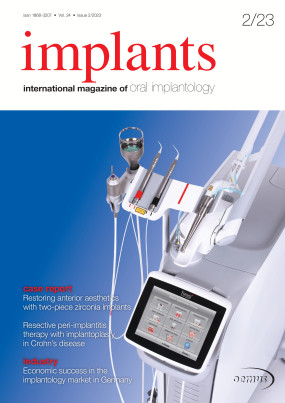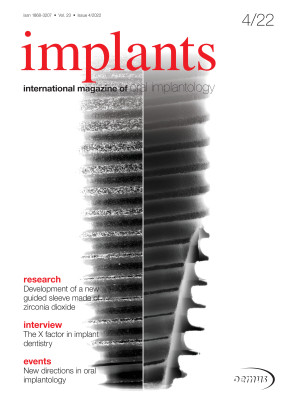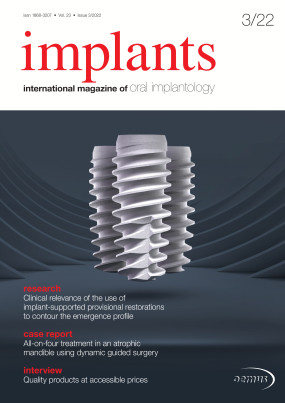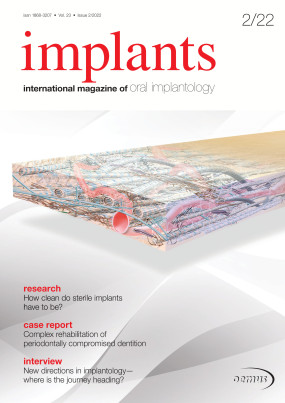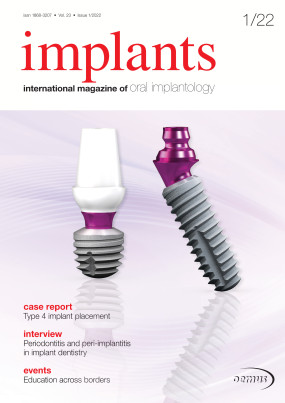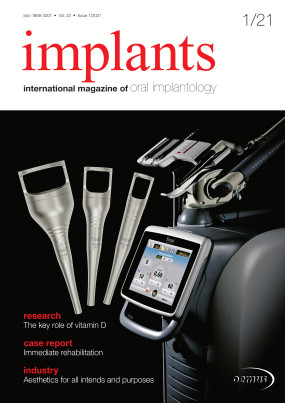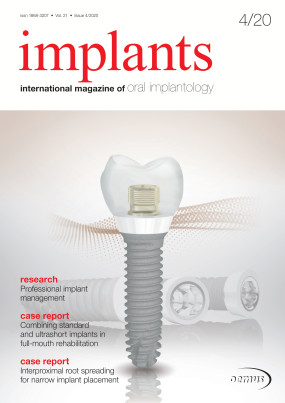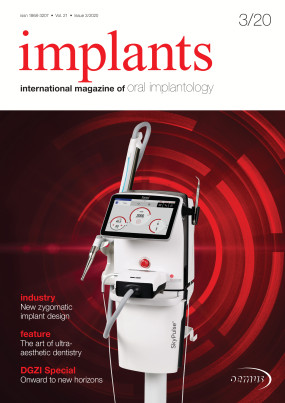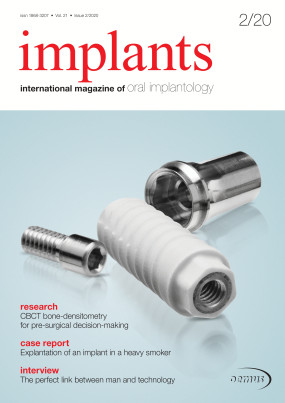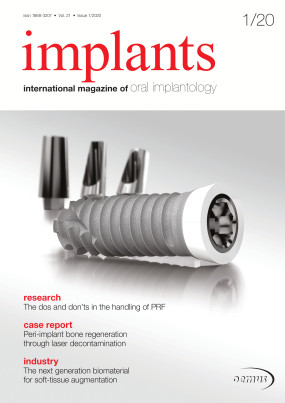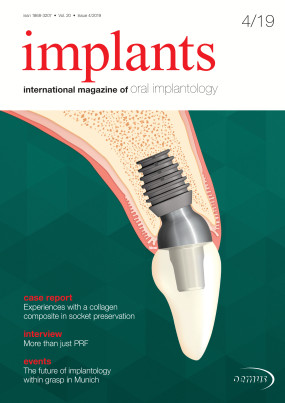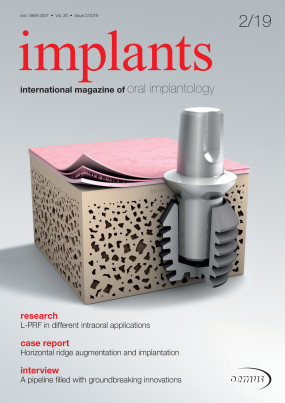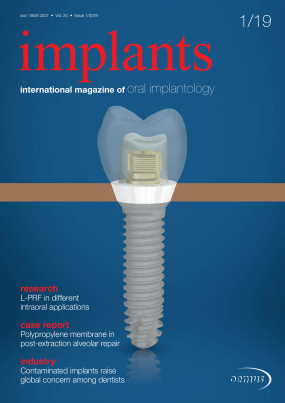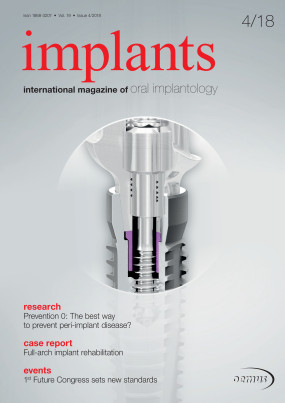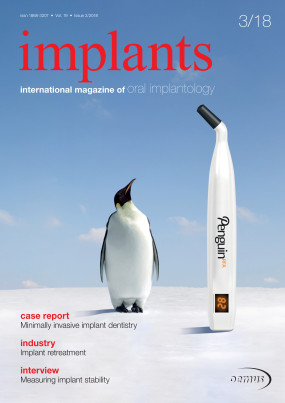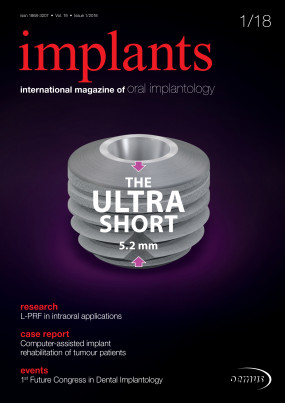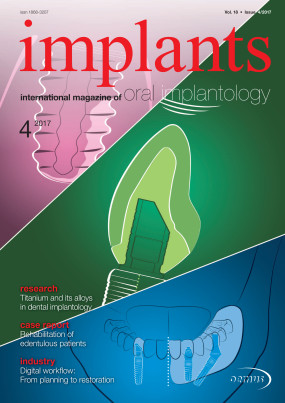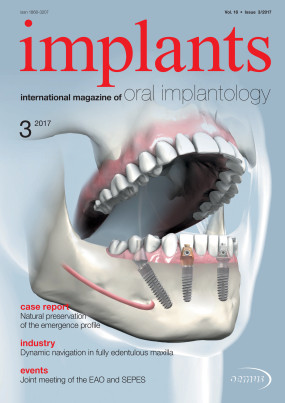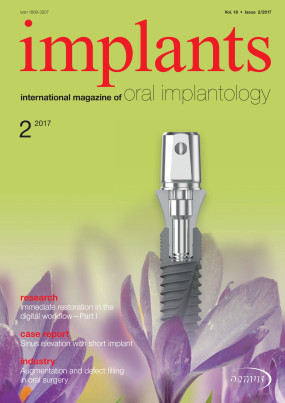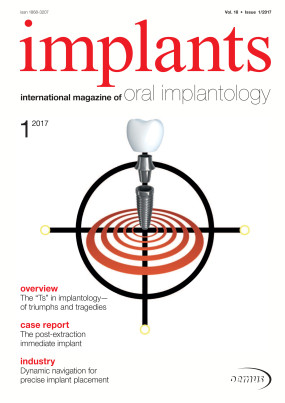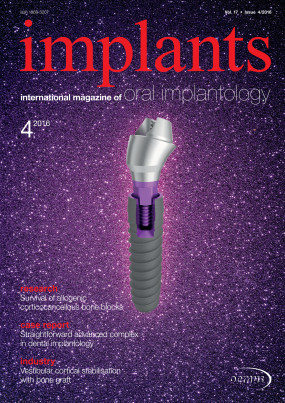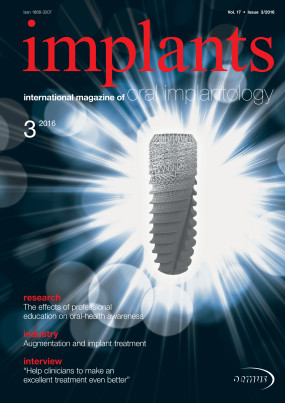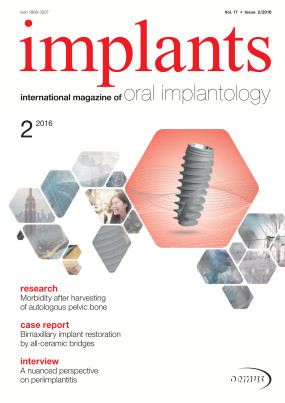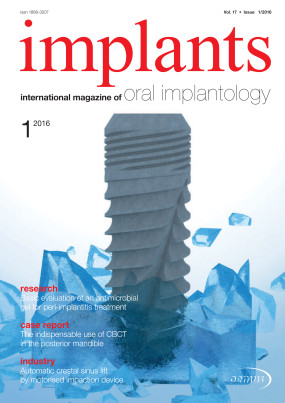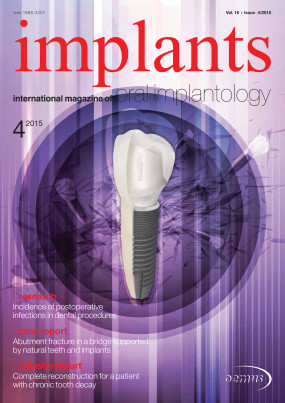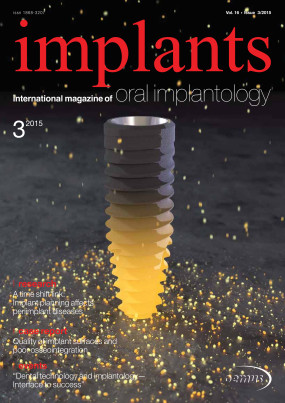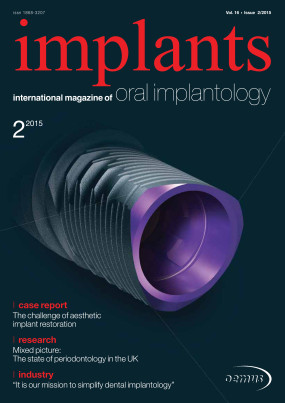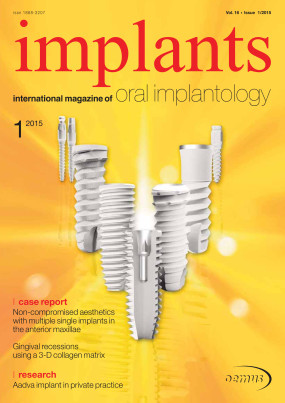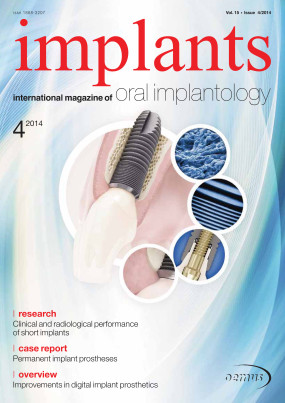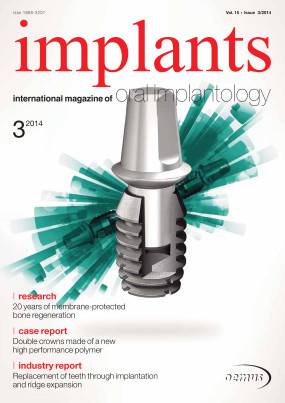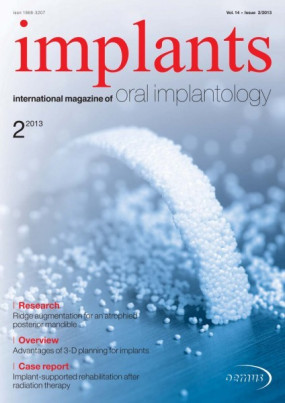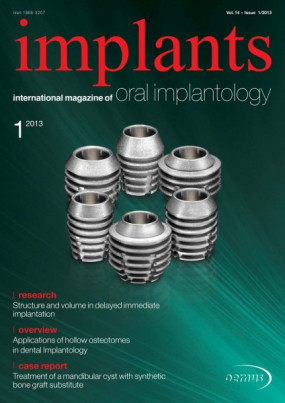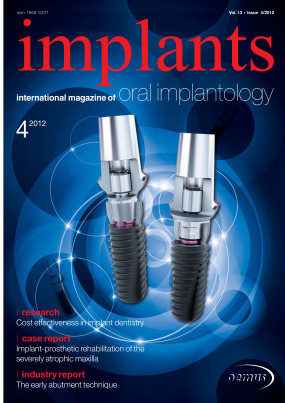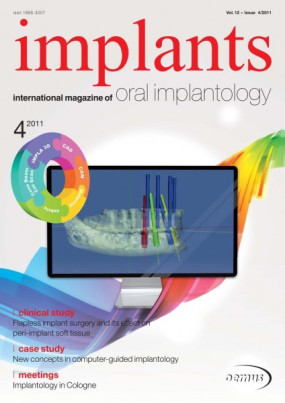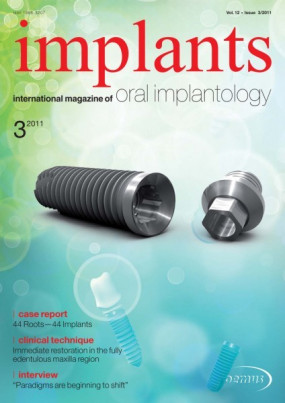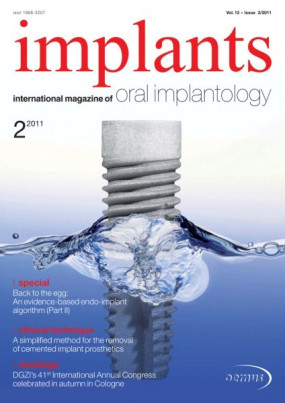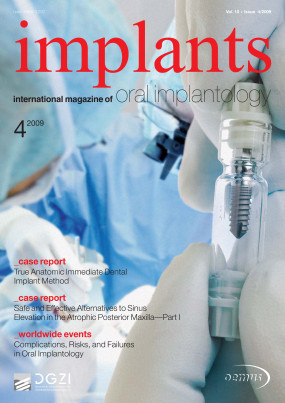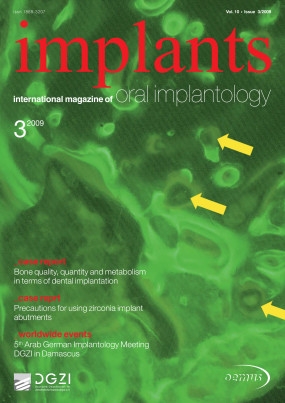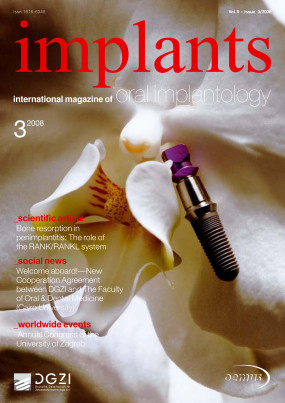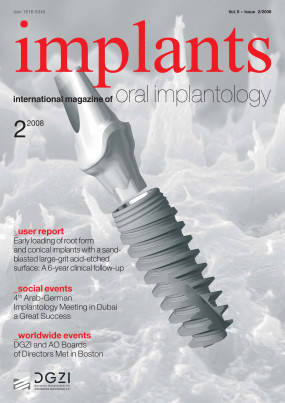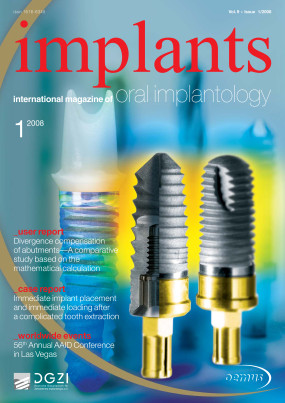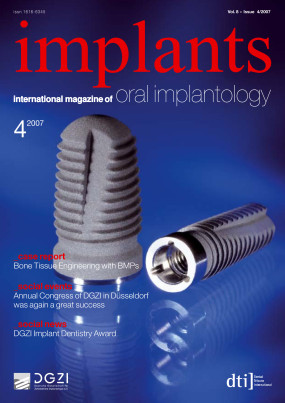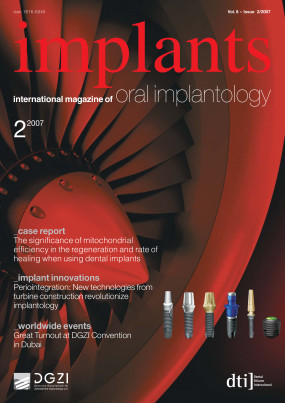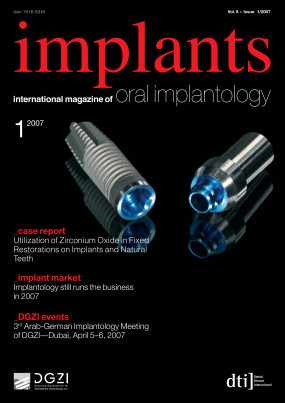Inhaltsverzeichnis
3
Editorial: Implantology in the year of IDS
Prof Dr Dr Frank Palm, President of the DGZI (German Association of Dental Implantology)
The 34th International Dental Show (IDS) in Cologne is just around the corner, bringing with it a challenging test for the international dental market. This dental show continues to grow, with approximately 1,900 exhibitors from 55 countries presenting their products in ten exhibition halls this year. We wait to see if an economic rebound has taken place, and if certain undesirable developments have been corrected...
6
Implant geometries: Biomechanical finite element analysis of small diameter and short dental implant
Istabrak Hasan1, Dr Friedhelm Heinemann2, Maria Aitlahrach1 and Prof Dr Christoph Bourauel1
Short and mini dental implants have been widely used as treatment alternatives in certain selected clinical situations. However, a profound scientific analysis of the mechanical and biomechanical impact of the reduced length and diameter of these implant geometries has not been published until now. Using finite element analysis, a series of different experimentally designed short and mini implants have been analysed with regard to their load transfer to the alveolar bone and have been compared to respective standard commercial implants. Mini implants have been inserted in an idealised bone bed representing the anterior mandibular jaw region and loaded with a force of 150 N. An immediate loading condition was assumed and analysed using the contact analysis option of the FE package MSC.Marc/Mentat. Short implants were inserted in an idealised posterior bone segment and loaded in osseointegrated state with forces of 300 N. Clearly increased bone loading was observed for the short and mini dental implants compared with standard implants, clearly exceeding the physiological limit of 100 MPa. The determined biomechanical characteristics could explain the slightly increased failure rate of short and mini dental implants...
14
Immediate implant insertion: How reliable is immediate implant insertion after tooth extraction? A retrospective clinical longitudinal study
Verena Stoll1, Prof Dr Dr Peter Stoll2, Dr Georg Bach3, Prof Dr Dr Wolfgang Bähr4 & Dr Kai Höckl5, Germany
Between 2001 and 2009 115 screw implants were inserted into fresh single root extraction sockets. The follow–up period ended at least 6 month after prosthetic treatment. In this prospective clinical multicenter study the results of two-piece titanium implants (Straumann, Thommen) and one-piece zirconium dioxide implants (Z-Systems) were compared in terms of osseous and soft tissue findings. Titanium implants showed the best ratio of osseo-integration (96 %) in comparison to zirconium dioxide implants (72,7 %), whereas all implants had a comparable success rate in terms of peri-implant soft tissue outcome at the end of the follow-up period.
18
Untying the Gordian Knot: An evidence-based endo-implant algorithm (Part I)
Dr Kenneth S. Serota, USA
Over the years, endodontics has diminished itself by enabling the presumption that it is comprised of a narrowly defined service mix; root-canal therapy purportedly begins at the apex and ends at the orifice. Nothing could be further from the truth. It is the -catalyst and precursor of a multivariate continuum, potentially the foundational pillar of all phases of any rehabilitation (Figs. 1a–c)...
32
Edentulous sites: Implant therapy of edentulous sites
Balint Török, Istvan Gera, Agnes Meszaros & Peter Windisch, Hungary
Deep periodontal defects with advanced bone loss of the buccal cortical plate represent a challenge for periodontal treatment in the upper front region. Literature data suggest that one and two-wall periodontal defects do not have tendency for complete periodontal regeneration and bone fill (Eickholz et al. 1996, 1998, 2000). Remaining residual pockets can also jeopardize the long term result of periodontal treatment (Matuliene et al. 2008). Tooth extraction in the upper front region even without any periodontal defect will result in certain amount of oro-vestibular and eventually vertical shrinkage of the original soft tissue contour (Schropp et al. 2003). Due to bone remodelling appropriate implant placement cannot be achieved in most of the cases. Socket preservation and different alveolar site developments are used to offset this unfavourable feature (Camargo & Lekovic, 2004; Lekovic & Kenney, 1997). It is obvious that the application of one of these techniques can be of great importance when tooth extraction is being considered at periodontally compromised teeth with advanced buccal plate involvement. It is not clear that ridge preservation procedures are effective in limiting horizontal and vertical ridge alterations in postextraction sites...









